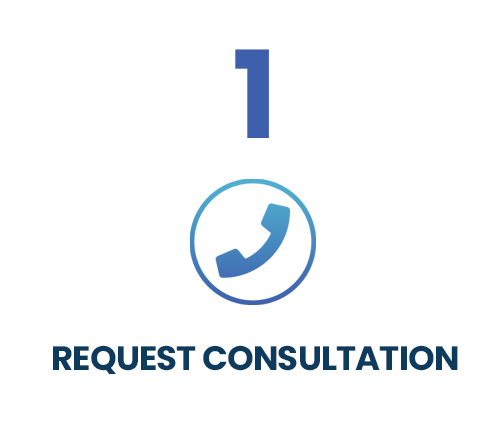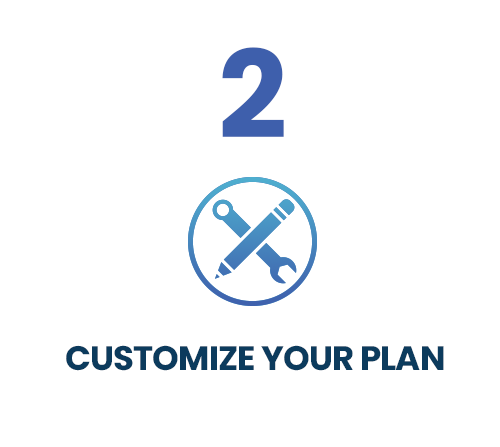
Has your brand decided that it’s time to level up its marketing plan? One of the first steps is nailing down an appropriate marketing budget. Whether it’s for digital, traditional, or a combination of both, you’ll need to decide on the budget before any work begins.
You may be wondering, “How do I know what to spend and how to spend it?” We can help. For a basic guide on how to determine your budget for marketing, read on.
Decide on Growth Objectives
Before locking down a marketing budget, growth objectives should be at the forefront of all marketing plans. Is your brand looking to abruptly skyrocket sales, or maintain the solid momentum it already has?
Being specific with your growth objectives will provide marketers with a more clear direction for building a tailored strategy. If your goal is to maintain incremental growth for an extended period of time, your budget may be lower than if your goal is to significantly spike sales as soon as possible.
While the solution to these two strategies will require different tactics, your budget will look different, too. A study conducted by Deloitte found that the average business spends about 13 percent of revenue on marketing. It’s important to have a strong grasp on your objectives to determine how much it might take to reach them.
B2C vs B2B Marketing
Whether your brand markets to consumers or to other businesses, this will be another factor in how much you’ll spend on marketing.
When trying to reach consumers, brands are looking to build strong resonance. Brand resonance describes the extent in which consumers feel they are in sync with your company. This means that business to consumer marketing will focus on strengthening behavior loyalty, attitudinal attachment, sense of community, and active engagement to build brand equity.
Marketing for consumers may be more emotionally driven with captivating and creative storytelling to inspire purchase.
On the other hand, business to business marketing is typically more informational and technical, involving multiple parties in the decision making process. Marketing tactics will focus on product and service features heavily, and often work to appeal less to emotion and more to logic.
Overall, brands typically spend more on marketing to consumers versus marketing to other businesses. Businesses that market to consumers typically spend anywhere from 10 percent to as much as 18 percent of revenue on marketing, while businesses that market to other businesses may spend anywhere from 10 percent to 15 percent of revenue on marketing.
Digital Marketing vs Traditional Marketing
Depending on your brand objectives and target audience, your strategy may include more digital marketing tactics like social media promotion and website design or more traditional marketing tactics like out of home advertising and product innovation.
The last year has seen tremendous growth in digital marketing tactics across all industries.
A survey conducted by Gartner found that nearly 60 percent of business’ marketing investments go toward digital marketing activity. This is in part due to the massive shift to online operations during the Covid-19 pandemic.
If your brand is looking to drive revenue, sales, volume, and profit, digital marketing may be the right avenue. If your brand is looking to improve customer experience or enhance your existing products and services, traditional marketing may be a better option.
Your target audience demographics and psychographics will also influence whether your brand incorporates a more digital or traditional strategy. Depending on your objectives, budget allocation for digital, traditional, and integrated marketing will vary.
Additional Tips for Estimating Your Marketing Budget
After determining your growth objectives, there are many other steps you can take to get started on planning your marketing budget. Some simple ways to get started are to:
Revisit last year’s spending
Are you looking to maintain momentum or grow from last year? Nearly half of all companies set marketing budgets depending on the previous year’s costs
Assess your competitors
What strategies are industry leaders employing to grow their business or maintain customer relationships?
Estimate Cost Per Lead
Determining your cost per lead is simple. Take your projected marketing costs divided by the # of new leads you want to generate. For example, if you spend $300,000 on marketing with a goal to attract 3,000 new people, then you’ll divide $300,000 by 3,000 to get a final cost of $100 per lead.
Estimate Conversion Rate
Your conversion rate is equal to the # of conversions you receive divided by the # of leads. This rate can help you determine how many of your leads are likely to convert.
Taking each of these steps can help you get a better idea on what you may need to spend on marketing. The best way to determine your marketing budget is to work with a trusted marketing agency.
Start Planning Your Marketing Budget Today
It’s important to note that there is no one-size-fits-all approach to marketing your brand. Deciding on what you should spend and how you should spend it requires extensive planning with professionals who are passionate about the success of your brand. Request a consultation with us today to get started on determining an appropriate marketing budget to reach your goals.






















